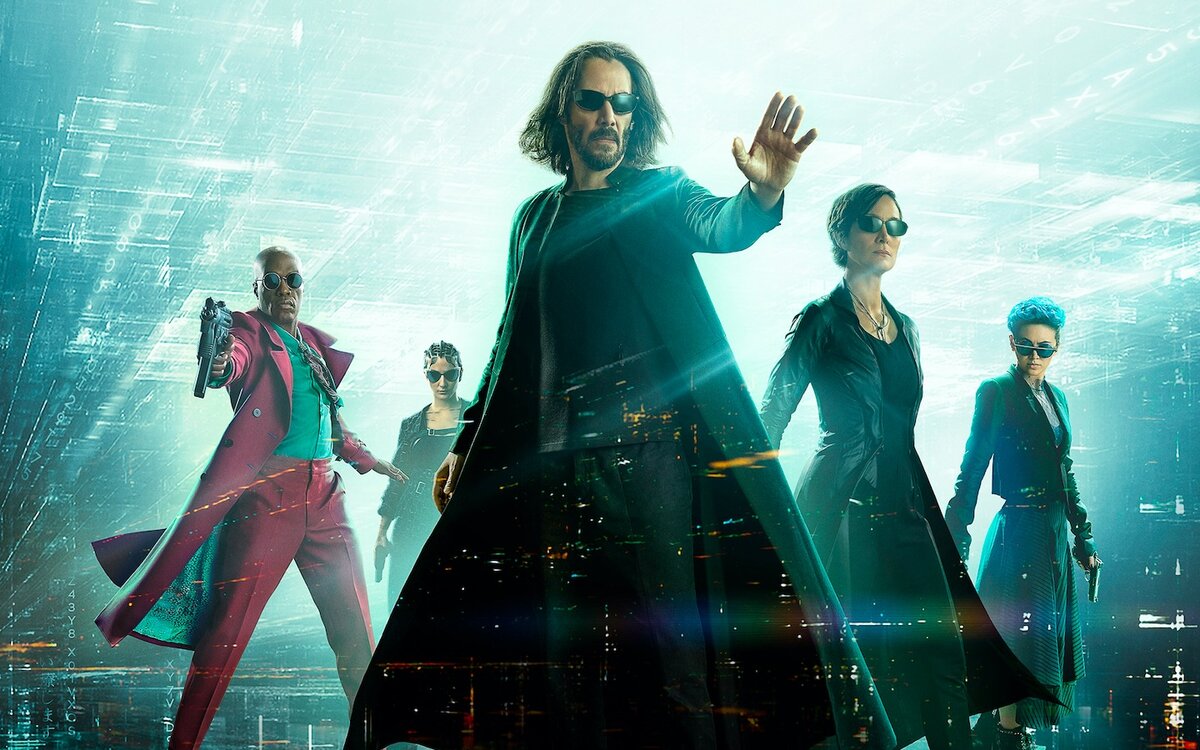REVIEW: The Matrix Resurrections Rewrites the Source Code for Sequels
3/5 red pills.

As far as Hollywood sequels go, the general rule is this: make it just like the original, but give us MORE. It’s an impossible needle to thread, to double up everything successful about the first film and still wedge it into a coherent and engaging narrative that stands on its own. And it’s a struggle The Matrix franchise knows all too well.
After the runaway success of 1999’s The Matrix, Warner Bros. and the Wachowskis set about cranking out a science fiction saga to rival Star Wars itself. 2003’s The Matrix Reloaded and The Matrix Revolutions had more of everything: more killer machines, more resistance fighters, more action, and more special effects. But the resulting films were, to put it bluntly, just plain bad.
I rewatched the trilogy in advance of seeing the new film, and both sequels hold up like lead balloons. While there were a handful of striking visuals, the films were bogged down with too many new characters and dialogue filled with arcane, pseudo-philosophical vocabulary that said absolutely nothing. In contrast, The Matrix held up beautifully, with so much style and ingenuity that it still took my breath away 21 years later.
This gives The Matrix Resurrections two paths to follow, or two pills to take. The blue pill is more of the same—more effects, more slo-mo fighting, more explosions. The red pill would be a reboot, telling the same story with younger faces or plunging further into its already complicated mythology. Luckily for us, director Lana Wachowski tosses out the pills and bypasses the binary entirely, delivering a wholly original continuation of the franchise that still pays loving homage to its predecessors.
I won’t spoil the film by getting into details, but suffice it to say that the film finds Thomas Anderson (the seemingly ageless Keanu Reeves) 20 years later, still living in San Francisco, and still wondering what lies beyond his own reality. A chance meeting with a striking woman named Tiffany (Carrie-Anne Moss) in a coffee shop awakens something within him. Is it memories of a life once lived? Or is it a glitch in the Matrix?
Joining Reeves and Moss are new additions Yahya Abdul-Mateen II (Candyman), as a version of a familiar character, and Jessica Henwick (Iron Fist) as Bugs, a new, young resistance fighter. Both deliver strong performances that meld seamlessly into the series. Jonathan Groff also brings a sense of humor to his role, as does Neil Patrick Harris, but I’ll save those thoughts for future articles. Suffice it to say, I would love to see more Matrix movies focused on Bugs and her crew.
The Matrix Resurrections spends some time questioning the nature of sequels and reboots. The film is stacked with meta-commentary and winks to the audience, while asking the same question. How do you recapture the magic of The Matrix without ruining it? If “more” doesn’t work, then how do you make a showstopper out of “less”?
Resurrections tries (and almost succeeds) at stripping away the heavy, esoteric mythology for a lean, emotionally driven love story. The film smartly focuses on Neo and Trinity, taking advantage of Moss and Reeves’ natural chemistry to cut to the sentimental quick. The film trades quips and jokes for sincerity, elevating human connection over battle against the machines.
But while Resurrections delivers on an emotional level, it stumbles as an action blockbuster. The fight sequences and the car chases are curiously inert, lacking the verve or innovation that made the first film so iconic. The film is beautifully shot, but it lacks the style and vibrancy of the original.
Perhaps the neon green and black latex palette of the original now read as dated and out of sync, but Resurrections fails to deliver on the show-stopping special effects that made the first film such a thrill. It made me wonder about Lily Wachowski’s absence from the film (she declined to return to the franchise). Did her absence have anything to do with the lack of visual, cinematic flair? We may never know.
It would be easy to say that having an older cast slows down the action, but that would be a lie, as the John Wick franchise can attest. Given the creative and dynamic action sequences of that trilogy (and the overlap between those who worked on both series), it’s puzzling that Resurrections doesn’t even try.
And while action nerds may be disappointed, the film is still engaging and fast-moving, even at 2 and a half hours. And the performances and story are compelling enough to engage without all the inscrutable mythology. Resurrections offers a fresh new exploration of classic themes of The Matrix—i.e. fate vs. free will, reality vs. illusion—while remaining true to the emotional core of the original trilogy.
And like any great Matrix film, it is sure to leave viewers debating, unpacking, and theorizing about it for years to come.
(image: Warner Bros.)
Want more stories like this? Become a subscriber and support the site!
—The Mary Sue has a strict comment policy that forbids, but is not limited to, personal insults toward anyone, hate speech, and trolling.—
Have a tip we should know? tips@themarysue.com